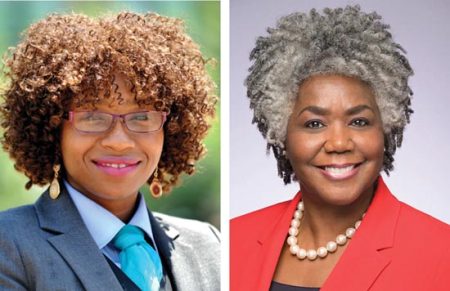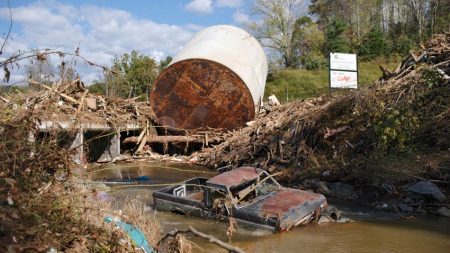A Living Legend of Asheville
by Johnnie Grant
Ms. Mae, as she is affectionately known, is an unpretentious and reserved woman who has seen many changes in Asheville for almost a century. Born in Rutherford County in 1904, she was the middle of thirteen children of John W. and Dovie Flack. After graduating from high school in Rutherfordton, she moved to Asheville in 1922.
“I moved to Asheville for jobs and educational opportunities; I was determined to be an asset to my family and my new community,” says Ms. Mae. “I was hired as a staff member in 1922 at the Biltmore Estate, and was an assistant to Cornelia S. Vanderbilt. [She was the] daughter of George W. Vanderbilt and mother to George H.V. and William A.V. Cecil.”
John Robinson,
along with a number of other persons of African American descent,
worked at the Biltmore Estate as well. It was while working there that
Ms. Mae’s interest in exploring other career possibilities, especially
cosmetology, took root.
“That
same year, I can remember Cornelia preparing for her 21st birthday. It
was an exciting time for her and for me. The house was decorated
beautifully with fresh flowers, fresh fruits, food, and people of
prominence were everywhere. Being close to the same age, she asked if I
would help style her hair.”
Ms.
Mae eagerly accepted the offer, and from there her interest in hair
design grew. Not long afterward, Cornelia married John F.A. Cecil, “and
I married for the first time, too.”
During
the 1920s, Asheville was enjoying a booming economy, and new buildings
were springing up everywhere. Ms. Mae recalls, “Battery Park Hill was
being excavated, and dirt was moved south to form Coxe Avenue. The U.S.
Post office sat where Pritchard Park is today, and the Pack Library and
Central Trust Bank were built on Pack Square. I rode the electric
street car trolley in 1922 for six cents, which was quite an efficient
service but expensive at times for someone attending school, and
walking was not at all a problem,” said Ms. Mae.
Asheville’s
African-American community thrived and survived from the ‘20s through
the ‘50s in spite of segregation, oppression, and the economic
depression.
“Young
folk went to black colleges and universities, some went as far away as
Columbia University in New York, most with the intention of coming back
to contribute to the building of Asheville’s black communities. Others
took up trade and industrial arts which were taught in our black junior
and senior high schools. We had a self-sustaining community of
ironworkers, brick masons, carpenters, lawyers, barbers, beauticians,
dentists, doctors, pharmacists, educators, jewelers, funeral home
[owners], ministers, and restaurateurs.” Isaac Dickson built houses for
black residents in such areas of the city as “Dicksontown.” African
American contractor James Miller built Asheville’s police and fire
department building, still in use today, as well as many other
buildings.
There
were more than twenty businesses on Eagle and South Market Streets, and
B.J. Jackson moved his fresh vegetable and food market from Magnolia
Street to South Pack Square. Ms. Mae continued to work at the Biltmore
Estate, and in 1930 she began attending Lawrence’s School of Beauty
Culture in the J.A. Wilson Building, 13 Eagle Street (later known as
Stewart’s School of Beauty Culture, relocated to Bartlett Street in
1933.)
“The
business and economy of the black communities in Asheville flourished
with each member and segment of the African American communities
banding together, and participating in the economic uplifting of our
area – we had a mission!” exclaims Ms. Mae. “I finished beauty school,
and owned my own beauty shop until 1991. I just stopped driving less
than a year ago, and just recently sold my vehicle!”
“We were
a community of people determined to succeed, and excel academically and
economically. I joined Mt. Zion Missionary Baptist in 1933; Reverend
Hairston was pastor. Coincidently, my first husband’s last name was
Hairston, but was of no relation to the reverend.” Ms. Mae recalls,
“The church was a place of sanctuary, where we went for a renewal of
strength to carry on. Our faith in life, community, and each other was
unshakable. Our kindred spirit was what helped us survive. We made
promises to our ancestors, promises we intended to keep.” And keep them
she has.








